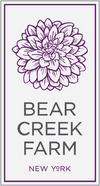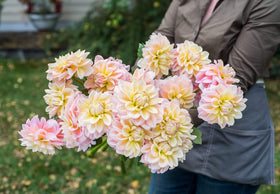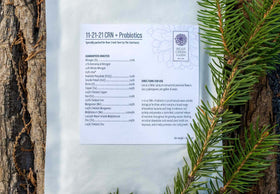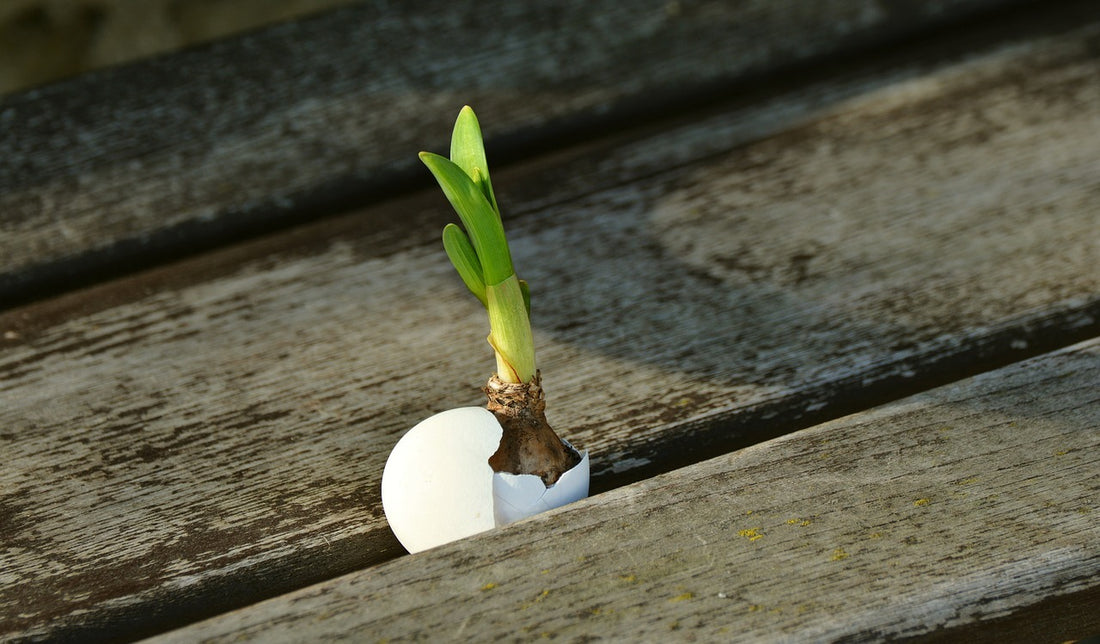Sowing seeds indoors provides an opportunity for beginners and seasoned gardeners alike to create a garden that features all manner of heirloom blooms absent from the local nursery. Think of it as an equal opportunity, low-cost endeavor (once you’ve made the first year’s investment of grow lights and heat mats if needed) that provides a promising seeds-to-flowers ratio. Sowing indoors also allows you get your hands into dirt earlier than waiting for the last season’s frost.
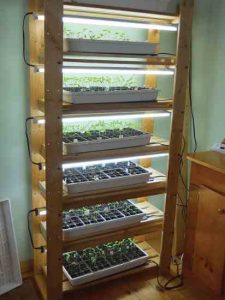 Seed starter shelving
Seed starter shelvingClaim your indoor growing workspace. You won’t need a penthouse—just a space large enough for your plants to thrive and room for growing lights in case you need them. Four to five feet stacked metal or wood shelves are a good option because a lot of growing lights come in this size. Pick your seed packets. While reliable seeds like sunflowers and cosmos are the easiest to grow, they are also fast-growing so don’t necessarily need to be started indoors. While some professionals may seed start all types of flowers (Bear Creek Farm is a big believer in direct seeding btw), my recommendation for the home grower is use indoor seeding for more hard-to-find/rare or heirloom varieties given the time commitment. Find out your expected last frost date and check your seed packet to determine days to harvest to figure out when you can plant indoors. Online resources provide last frost date (by zip code) and growing guides. A fantastic Cornell site, for example, offers a guide to growing hundreds of varieties of flowers and plants.
Gather Your Happy Tools
While you can use items you have around the house and even egg cartons, I recommend the one-time investment of seed trays. It makes everything easier, more uniform and rapid. Drainage is excellent, root systems form well, and space is best utilized. My two favorites for both annual and perennial seeds are the 72-cell and 50-cell flats. Both produce large, bulky plants that won’t require repotting before transplant into the garden. In addition to cell containers, flat drainage trays are needed to set the cells on, as well as some type of plastic covering or a dome lid, which maintains humidity and makes for speedy germination.
Look for a high quality potting soil mix or seed starting mix (nix garden soil, which can contain damaging pests, diseases and other seeds). Be sure there are no synthetic fertilizers or bark, which can burn young plants. The right soil structure allows some water to drain through while keeping moisture and nutrients the plant needs to thrive. There are many good potting soils, but after much trial and error, I've found Pro-Mix with mycorrhizae to be among the best.
Tag Seed Trays
Label each tray with species name and sowing date. This important organizational step will help you keep it together along the way, especially if you are sowing numerous seeds. It is a good idea not to mix different flowers in the same tray as germination rates vary and therefore, you might be forced to remove the dome before some seedlings have appeared. Domes are there only to maintain humidity and to encourage germination. Once seedlings emerge, they need fresh air and maximum light. I don’t remove the domes the day the seedlings are up, however. I wean them into their new environment by loosening and propping up the domes to let air in for a day or two before complete removal. Don’t let the cell packs dry out and keep the seedlings nicely moist but not swimming. It is best to water the plants from the bottom when possible. You can add water to the bottom waterproof tray, which allows the soil to wick up the water into the root system where it is most needed.
The Cover Up
Tamp down moistened soil into your containers before you plant to eliminate air pockets. Little rootlets don’t like them and it will make it easier to remove plants when you are ready to transplant. Check your instructions for how deep in the soil you should plant the seeds. Position the plastic dome lids or plastic cover of your choice snugly over the trays.
Location, Location, Location
Placing seeds near sunlight or on a warm fridge can work, but both have downsides. If you enjoy seeding, you’ll outgrow these spaces fast. Soil should be relatively warm—roughly 65 degrees or higher. Some people use heat mats designed for seed starting for more consistent results.

Don’t underestimate the amount of light that tiny plants need to grow. Move the sprouts to a sunny spot or under grow lights. You can use fluorescent lights, which are less expensive but I prefer full spectrum, which mimic the sun and produce stronger plants. Sprouts have a better chance of survival given the consistency that artificial light provides. If you are using regular sunlight, seeds will reach for the sun, resulting in weak stems that bend, so be sure to keep moving cell packs to keep stems straight. For lights, suspend them no more than a couple inches above the tallest plant and keep lights on for 14 to 16 hours a day. Bulbs too far away from foliage create leggy, weak stems so do keep them very low and just adjust up as the plants grow.
Harden Off Before Sending Outside
Before placing vulnerable young sprouts in your garden, take a few days to ease them into the process. Find a shady spot outside and place them there, gradually increasing the amount of time each day. Bring them back in at night. After a week they should be fully acclimated to their fancy new outdoor homestead. This process of hardening off is critical. The plants have been in a warm, cozy, and temperature-controlled environment for a long time so sudden exposure to wind, sun, and variations in temperature can be very stressful.

Be Realistic
If seedlings fail, resist the urge to cry out, “Oh my gosh. I’m a baby-plant killer!” or to search for a BPK Anonymous meeting. Losing some seeds that you have sown indoors is normal (although the rate is lower than that of sowing outdoors). It happens to us all. The more often you practice sowing seeds indoors, the greater your future success.
Another question that I often get is can one grow a dahlia from seeds? The answer is yes, but you won’t always know what you get. No two dahlia seeds have the exact same DNA so the flowers from the same seed pod can look very different, often with twisted petals or open centers. There is a wonderful, brilliant expert for breeding dahlias from seed, Kristine Albrecht from Santa Cruz Dahlias, on Instagram @santacruzdahlias
